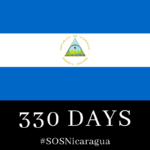In 2007, Politicstv.com began compiling a weekly top 10 list of political videos. At the time, the site had been in existence for about a year. They were described as “a progressive political news Internet video channel featuring news, opinion and humor,” which would support itself through advertising. The goal of the site was to reach out to progressive (read: left-leaning) viewers, focusing exclusively on issues that would appeal to this constituency (MediaPost, 2006).
I would say that Politicstv.com, though still in existence, is not one of the most successful ventures attempting to marry politics and cyberspace. In fact, when I set out to look for political viral videos, the first site I thought of was JibJab. They first came into the limelight of American public consciousness with the “This Land is Your Land” video, featuring John Kerry and George W. Bush. Though JibJab began as an outlet for political satire, by 2007 it had expanded into the on-line card business. In fact, they brought us another internet classic: Elf Yourself (Mcarthy, 2009).
Without a doubt, most political organizers in the United States look to the internet to enhance political participation. The Internet’s promises access to one of the most coveted demographics: the elusive “young voter,” the 18-34 year-olds who spend a significant amount of their time online. Furthermore, the Internet is inherently democratic: you do not need a degree, a resume, or extensive experience to start writing a blog, or to post videos of yourself on youtube.
So, why not politics? Why not admit that the revolution, as Gil Heron Scott stated once, will not be televised?
Or, as Henry Jenkins suggests, that new media, like the Internet, empower us to bypass mainstream media (Jenkins, 2007). New media are significantly different than old media when it comes to politics and participation:
The new media operate with different principles than the broadcast media that dominated American politics for so long: access, participation, reciprocity, and peer-to-peer rather than the one-to-many communication. Given such principles, we should anticipate that digital democracy will be decentralized, unevenly dispersed, profoundly contradictory, and slow to emerge (Jenkins, 2007, p. 208).
Henry Jenkins is a firm believer in participatory culture. Nevertheless, he, more than anyone I have come across, understand that the grassroots power of the internet is half of the equation. Mainstream media are constantly monitoring online events. Their reporting puts viral video into overdrive. In fact, understanding the relationship between old media (television, newspapers, magazines, etc) and new media can partially explain the difference between politicstv.com and barelypolitical.com. If you don’t recognize the site, maybe you will remember this:
Barelypolitical.com is part of nextnewnetworks.com. This is an online content provider that has branded itself as “TV for the Internet.” The company, which is privately-owned, counts Goldman Sachs as one of their investors. And this is another important distinction between barelypolitical.com and politicstv.com: the first has a clear business plan and investors, and the second one, apparently, underestimates both (at least as far as I could tell).
But I digress… I promise I have a point. When it comes to politics, the potential of the internet works as part of a strategy, and the key aspect of that strategy is convergence:
Candidates may build their base on the Internet but they need television to win elections. It’s the difference between a push media (where messages go out to the public whether they seek them or not) and a pull medium (which serves those with an active interest in seeking out information on a particular topic). The Internet reaches the hard core, television the undecided (Jenkins, 2007, p. 213).
Mobilizing on the Internet
In 2008, Wired magazine columnist Sarah Stirland wrote that Obama owed his nomination to the Internet:
He used the web more effectively than any prior national candidate, harnessing its organizing power to vault over party favorite Hillary Clinton and become the first black presumptive presidential nominee. With an enormous internet-driven donor base of 1.5 million people, more than 800,000 of whom have accounts on Obama’s social networking website, Obama is the first internet candidate to win mainstream success. His online supporters have created more than 30,000 events to promote his candidacy, some of which are still underway in the last primary states of Montana and South Dakota (Stirland, 2008).
Reading Stirland’s article, I could not help but wonder why she did not mention Howard Dean. If anyone pioneered Internet campaigning, it was Dean. This is how Jenkins summarizes the Dean campaign:
Dean raised more money online from small contributions than any other previous candidate, setting a model that John Kerry would subsequently follow to close the “money gap” with the Republicans. His staff used blogging to create a more intimate, real-time relationship with his supporters. They deployed “smart mob” — style tactics, including an adept use of Meetup.com, to quickly launch rallies, drawing together thousands of people at a time when other candidates were still speaking to half-empty rooms. Dean didn’t so much create the movement; his staff simply was willing to listen and learn” (Jenkins, 2007, p. 210).
Obama applied and refined these tactics, tapping into social networks, like Facebook, that were in their infancy in 2004, or did not even exist, like twitter. Of course, not everything was a smashing success. When the Obama campaign decided to announce the name of Obama’s running mate via text message, they overwhelmed the system. As a result, many supporters ended up not receiving the text message until hours later (Vargas, 2008).
Regardless of this glitch, the success of the Obama campaign sparked considerable interest on his web tactics. Meghan McCain, in particular, decried how much Republicans failed to understand and harness the Internet. She suggested that “unless the GOP evolves as the party that can successfully utilize the Web, we’ll continue to lose influence” (McCain, 2009). And utilizing effectively the web is not merely about jumping on every new site that appears on the horizon. It is about having a message that appeals to the voters, and, as McCain suggests, about understanding the times in which we live:
We live in an era where most individuals my age [Meghan McCain is in her twenties] get their political news from The Daily Show and SNL’s Weekend Update. I know this aggravates the old school political operatives to no end, but it’s true. The Obama administration understand that my generation spends most of its day on a laptop or a BlackBerry, and that using the web is easy way to communicate their ideas to their constituents. Making a website, Facebook group, or YouTube video entertaining and enticing is where grassroots campaigning begins (McCain, 2009).
To be fair, not all Republicans are as resistant to the Internet. McCain herself is an excellent example. However, she notes, with frustration, the disconnect between the Republican party and young voters. It is also worth noting that the demographic composition of the nation is changing dramatically. In other words, “the overall U.S. electorate is becoming less conservative, less white, and younger, while Republican voters are getting older, whiter, and more conservative” (Koppelman, 2008).
Maybe it’s time, like McCain suggests, to rethink the usefulness of videos like this one.
References:
- Jenkins, H. (2007). Convergence Culture: Where old and new media collide
- McCain, M. (2009). Why Republicans don’t get the Internet.







Pingback: The Internet. Yes, everyone saw you do that. « Olivia1022's Blog